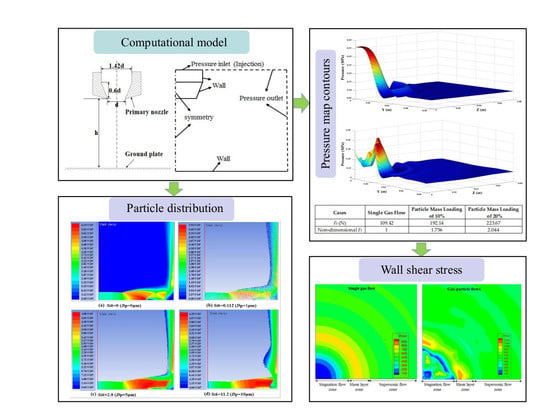Numerical Analysis of Supersonic Impinging Jet Flows of Particle-Gas Two Phases
Abstract
:1. Introduction
2. Theoretical Analysis
2.1. Pressure Coefficient
2.2. Particle Drag Coefficient
2.3. Stokes Number
2.4. Impinging Force on Plate Ground
3. Numerical Methods
3.1. Computational Domain
3.2. Numerical Schemes
3.3. Boundary Conditions
3.4. Mesh Independence Study
4. Results and Discussion
4.1. Validation
4.2. Particle-Gas Flows Induced by Different Nozzles
4.3. Effect of Stokes Number
4.4. Particle Effects
5. Conclusions
Author Contributions
Funding
Acknowledgments
Conflicts of Interest
References
- Alvi, F.S.; Iyer, K.G. Mean and unsteady flowfield properties of supersonic impinging jet with lift plates. In Proceedings of the 5th AIAA/CEAS Aeroacoustics Conference, Bellevue, WA, USA, 10–12 May 1999. [Google Scholar]
- Henderson, B.; Bridges, J.; Wernet, M. An experimental study of the oscillatory flow structure of tone-producing supersonic impinging jets. J. Fluid Mech. 2005, 542, 115–137. [Google Scholar] [CrossRef]
- Henderson, B.; Bridges, J.; Wernet, M. An investigation of the flow structure of tone producing supersonic impinging jets. In Proceedings of the 8th AIAA/CEAS Aeroacoustics Conference & Exhibit, Breckenridge, CO, USA, 17–19 June 2002. [Google Scholar]
- Mitchell, D.; Honnery, D.; Soria, J. Optical measurements in free and impinging underexpanded jets. In Proceedings of the 13th International Symposium on Applications of Laser Techniques to Fluid Mechanics, Lisbon, Portugal, 26–29 June 2006. [Google Scholar]
- Suzuki, H.; Endo, M.; Sakakibara, Y. Structure and oscillation of underexpanded jet. Open J. Fluid Dyn. 2013, 3, 85–91. [Google Scholar] [CrossRef] [Green Version]
- Davis, T.B.; Kumar, R. Shear layer characteristics of supersonic free and impinging jets. Shock Waves 2014, 25, 507–520. [Google Scholar] [CrossRef]
- Elavarasan, R.; Lourenco, L.; Venkatakrishnan, L.; Krothapalli, A. Application of PIV to large scale STOVL supersonic jet facility. In Proceedings of the 37th AIAA Aerospace Sciences Meeting and Exhibit, Reno, NV, USA, 11–14 January 1999. [Google Scholar]
- Carling, J.C.; Hunt, B.L. The near wall jet of a normally impinging, uniform, axisymmetric, supersonic jet. J. Fluid Mech. 1974, 66, 159–176. [Google Scholar] [CrossRef]
- Kim, S.I.; Park, S.O. Numerical analysis of the oscillatory behaviors of supersonic impinging jet flow. In Proceedings of the 24th International Congress of Aeronautical Science, Yokohama, Japan, 29 August–3 September 2004. [Google Scholar]
- Kim, K.H.; Chang, K.S. Three-dimensional structure of a supersonic jet impinging on an inclined plate. J. Spacecr. Rocket. 1994, 31, 778–783. [Google Scholar] [CrossRef]
- Chin, C.; Li, M.; Harkin, C.; Rochwerger, T.; Chan, L.; Ooi, A.; Risborg, A.; Soria, J. Investigation of the flow structures in supersonic free and impinging jet flows. J. Fluid Eng. 2013, 135, 031202. [Google Scholar] [CrossRef]
- Dauptain, A.; Gicquel, L.Y.M. Large eddy simulation of supersonic impinging jets. AIAA J. 2012, 50, 1560–1574. [Google Scholar] [CrossRef]
- Henderson, C.B. Drag coefficients of sphere in continuum and rarefied flows. AIAA J. 1976, 14, 707–708. [Google Scholar] [CrossRef]
- Samel, M.A. Numerical Investigation of Gas-Particle Supersonic Flow. Master’s Thesis, University of Massachusetts Amherst, Amherst, MA, USA, May 2011. [Google Scholar]
- Goswami, P.S.; Kumaran, V. Particle dynamics in a turbulent particle–gas suspension at high Stokes number, Part 2. The fluctuating-force model. J. Fluid Mech. 2010, 646, 91–125. [Google Scholar] [CrossRef] [Green Version]
- Okuda, S.; Choi, W.S. Gas-particle mixture flow in various types of convergent-divergent nozzle. J. Chem. Eng. Jpn. 1978, 11, 432–438. [Google Scholar] [CrossRef] [Green Version]
- Rudinger, G. Some effect of finite particle volume on the dynamics of gasparticle mixture. AIAA J. 1965, 3, 1217–1222. [Google Scholar] [CrossRef]
- Rudinger, G. Gas-particle flow in convergent nozzles at high loading ratios. AIAA J. 1969, 8, 1288–1294. [Google Scholar] [CrossRef]
- Hwang, C.J.; Chang, G.C. Numerical study of gas-particle flow in a solid rocket nozzle. AIAA J. 1988, 26, 682–689. [Google Scholar] [CrossRef]
- Lin, Z.; Liu, Z.X.; Liu, Q.; Li, Y. Fluidization characteristics of particles in a groove induced by horizontal air flow. Powder 2020, 363, 442–447. [Google Scholar] [CrossRef]
- Liu, Q.; Ye, J.H.; Zhang, G.; Lin, Z.; Xu, H.G.; Zhu, Z.C. Study on the metrological performance of a swirlmeter affected by flow regulation with a sleeve valve. Flow Meas. Instrum. 2019, 67, 83–94. [Google Scholar] [CrossRef]
- Liu, Q.; Ye, J.H.; Zhang, G.; Lin, Z.; Xu, H.G.; Zhu, Z.C. Metrological performance investigation of swirl flowmeter affected by vortex inflow. J. Mech. Sci. Technol. 2019, 33, 2671–2680. [Google Scholar] [CrossRef]
- Liu, Q.; Wang, Y.X.; Lin, Z.; Zhu, Z.C. Curvature characteristics of vertical gas-liquid interface for gas-jet penetrating into liquid sheet. Exp. Therm. Fluid Sci. 2019, 109, 109909. [Google Scholar] [CrossRef]
- Chen, D.S.; Cui, B.L.; Zhu, Z.C. Numerical simulations for swirlmeter on flow fields and metrological performance. Trans. Inst. Meas. Control 2018, 40, 1072–1081. [Google Scholar] [CrossRef]
- Chen, D.S.; Cui, B.L.; Zhu, Z.C. Numerical simulation of the effect of upstream swirling flow on swirl meter performance. J. Therm. Sci. 2018, 27, 117–124. [Google Scholar] [CrossRef]
- Greenfield, B.J.; Louisos, W.F.; Hitt, D.L. Numerical simulations of multiphase flow in supersonic micro nozzles. In Proceedings of the 49th AIAA Aerospace Science Meeting Including the New Horizons Forum and Aerospace Exposition, Orlando, FL, USA, 4–7 January 2011. [Google Scholar]
- Hinds, W.C. Aerosol Technology: Properties, Behavior, and Measurement of Airborne Particles; Wiley: New York, NY, USA, 1999. [Google Scholar]


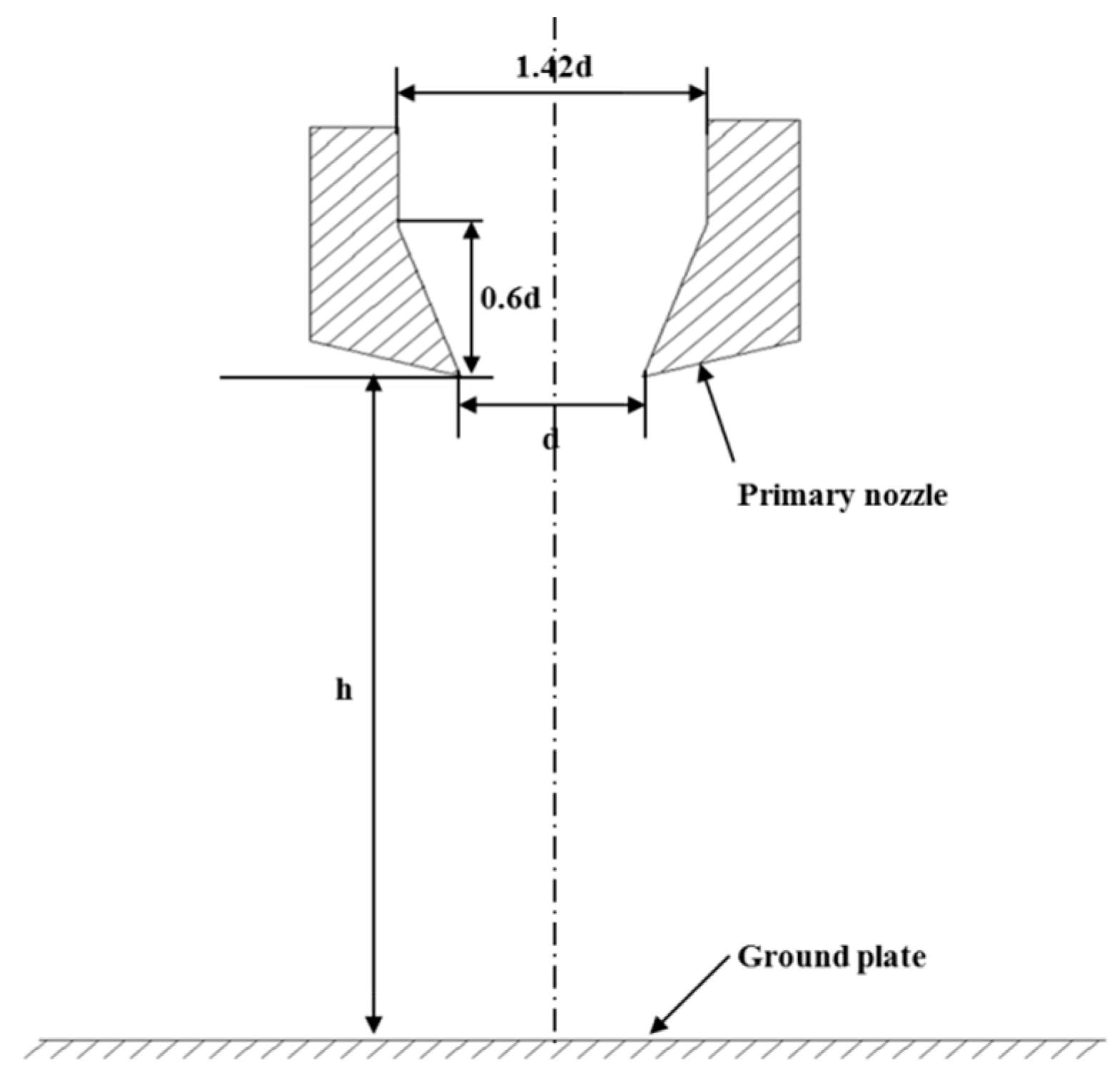
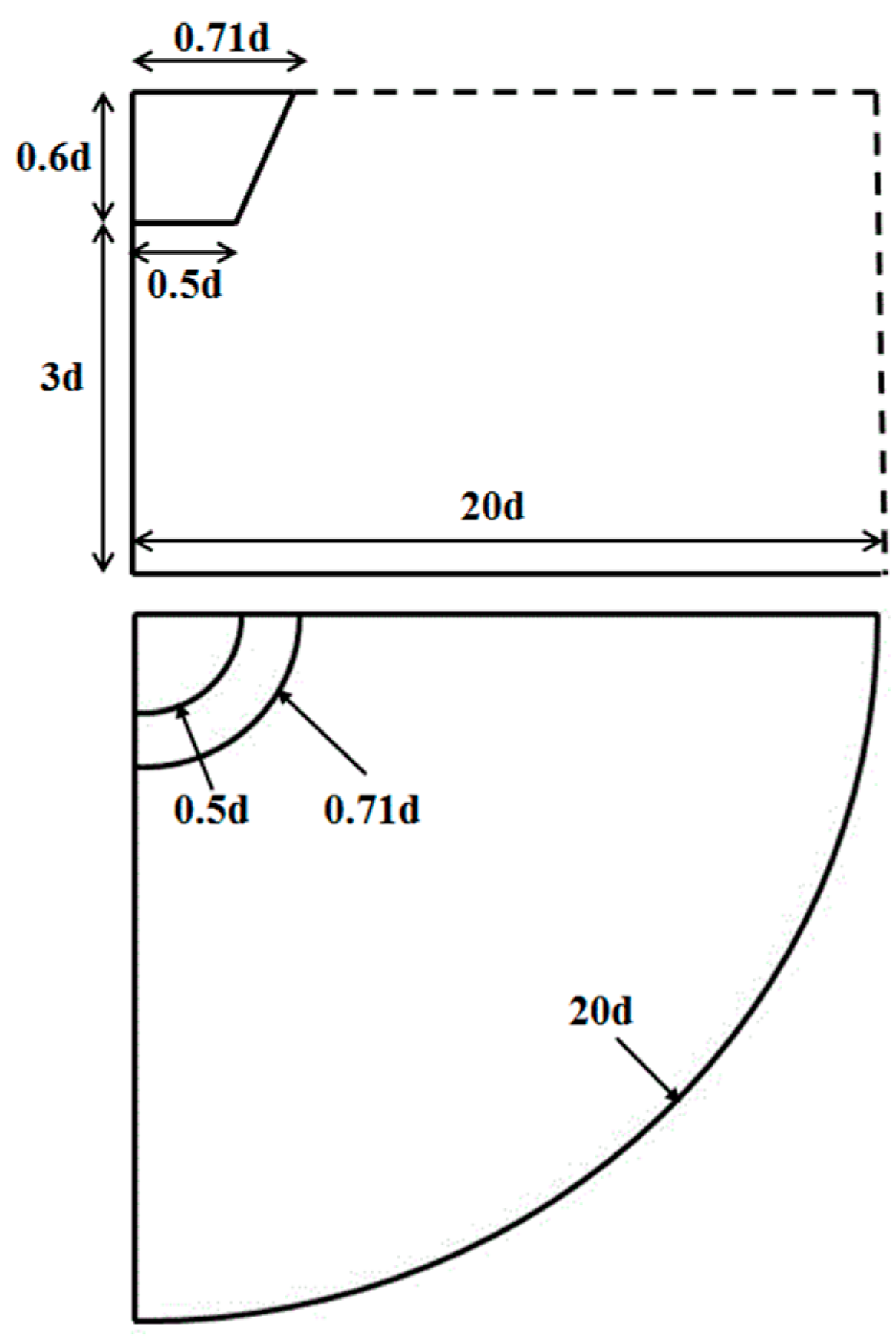


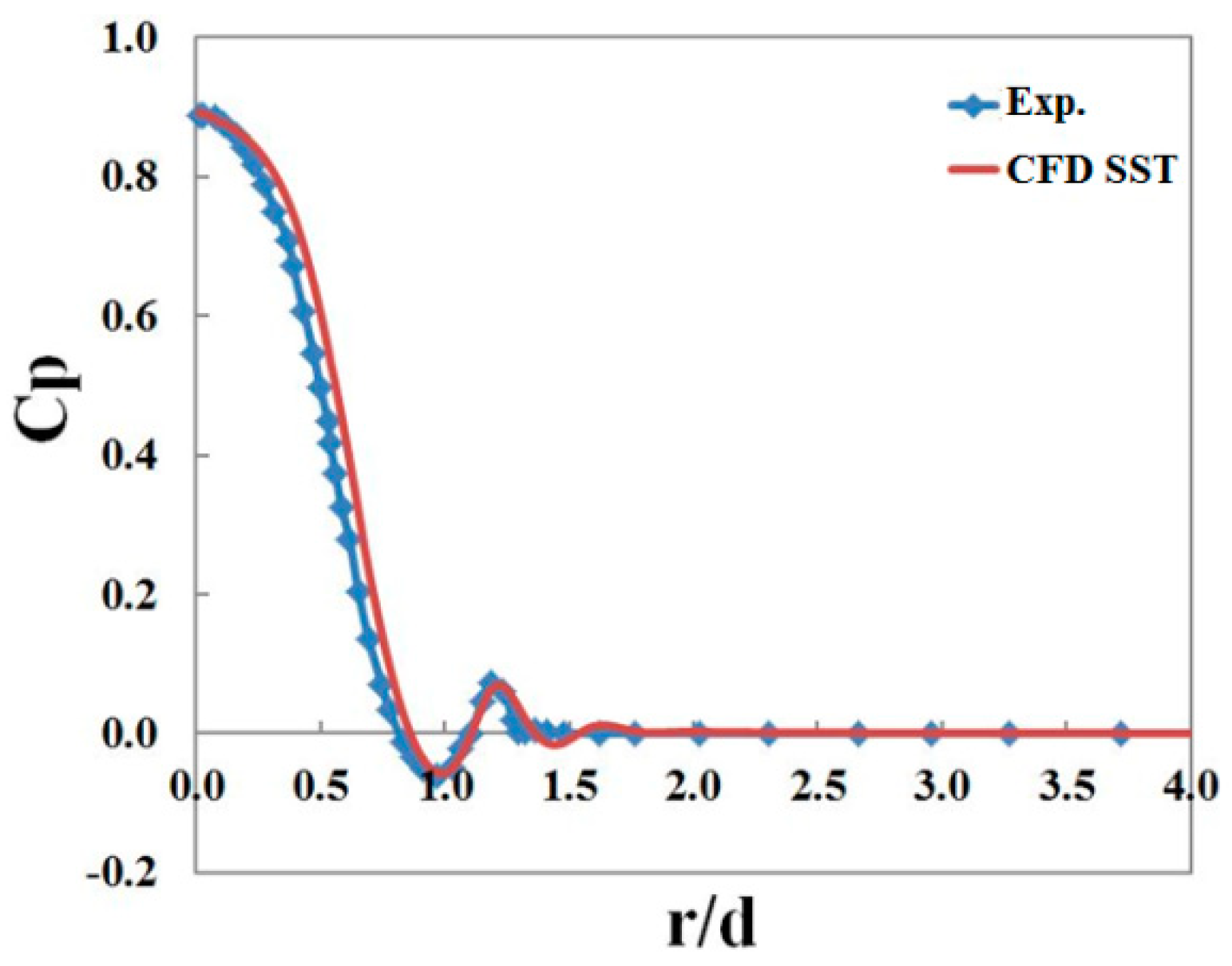

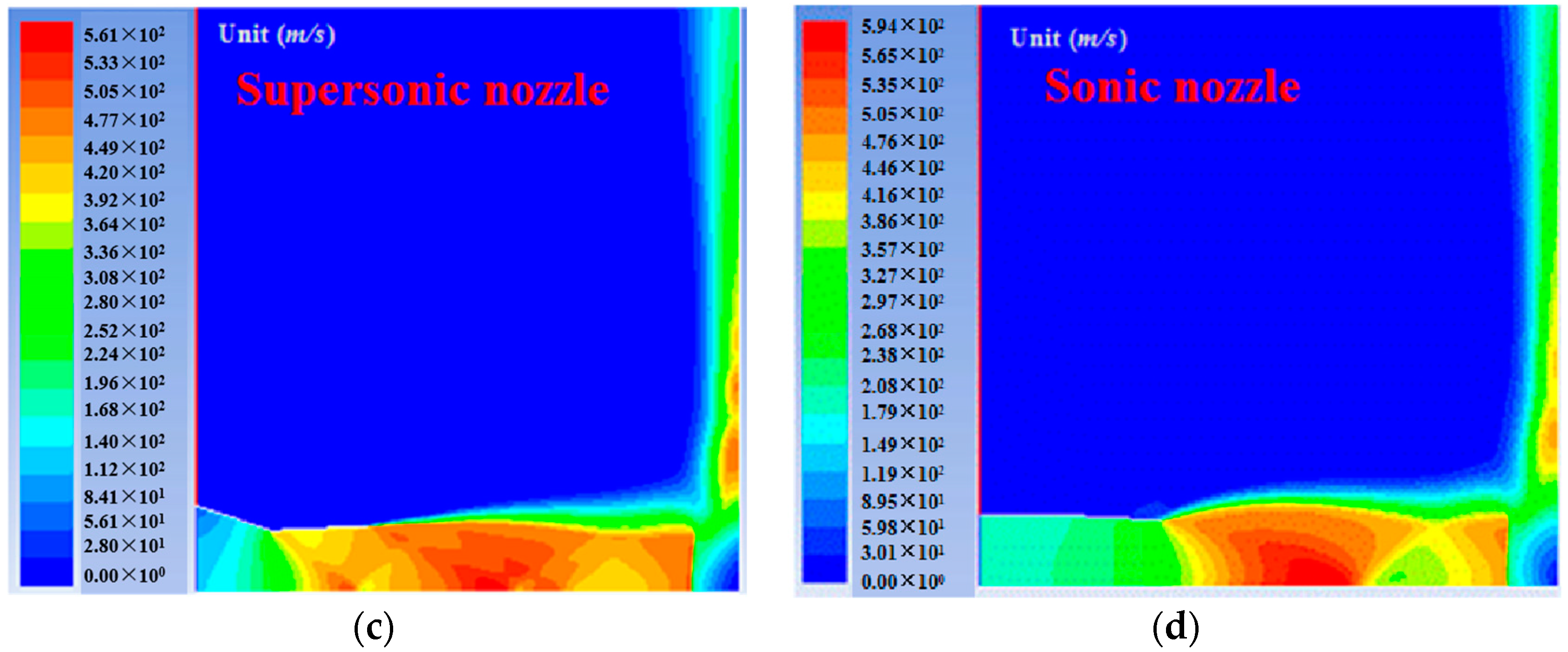
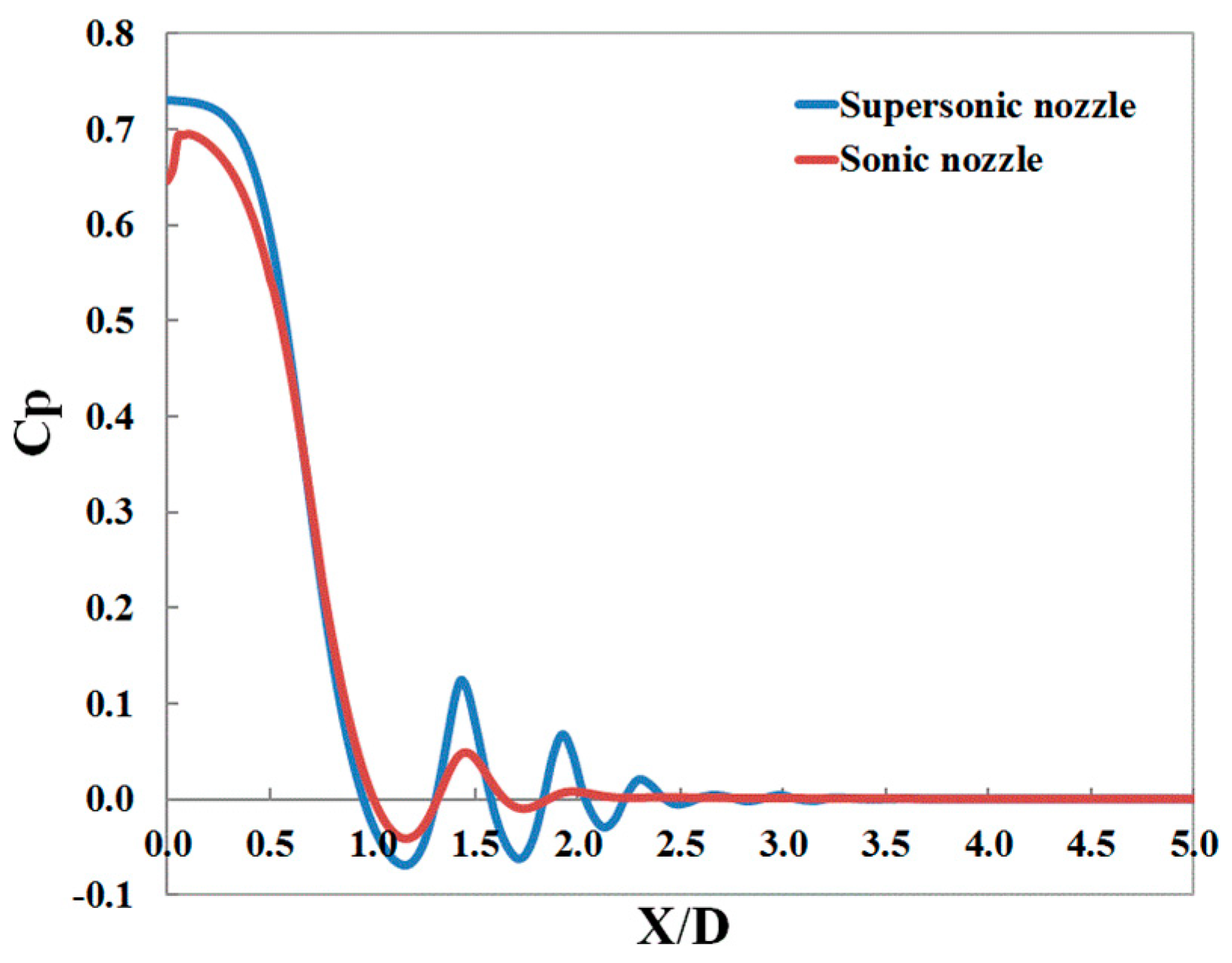
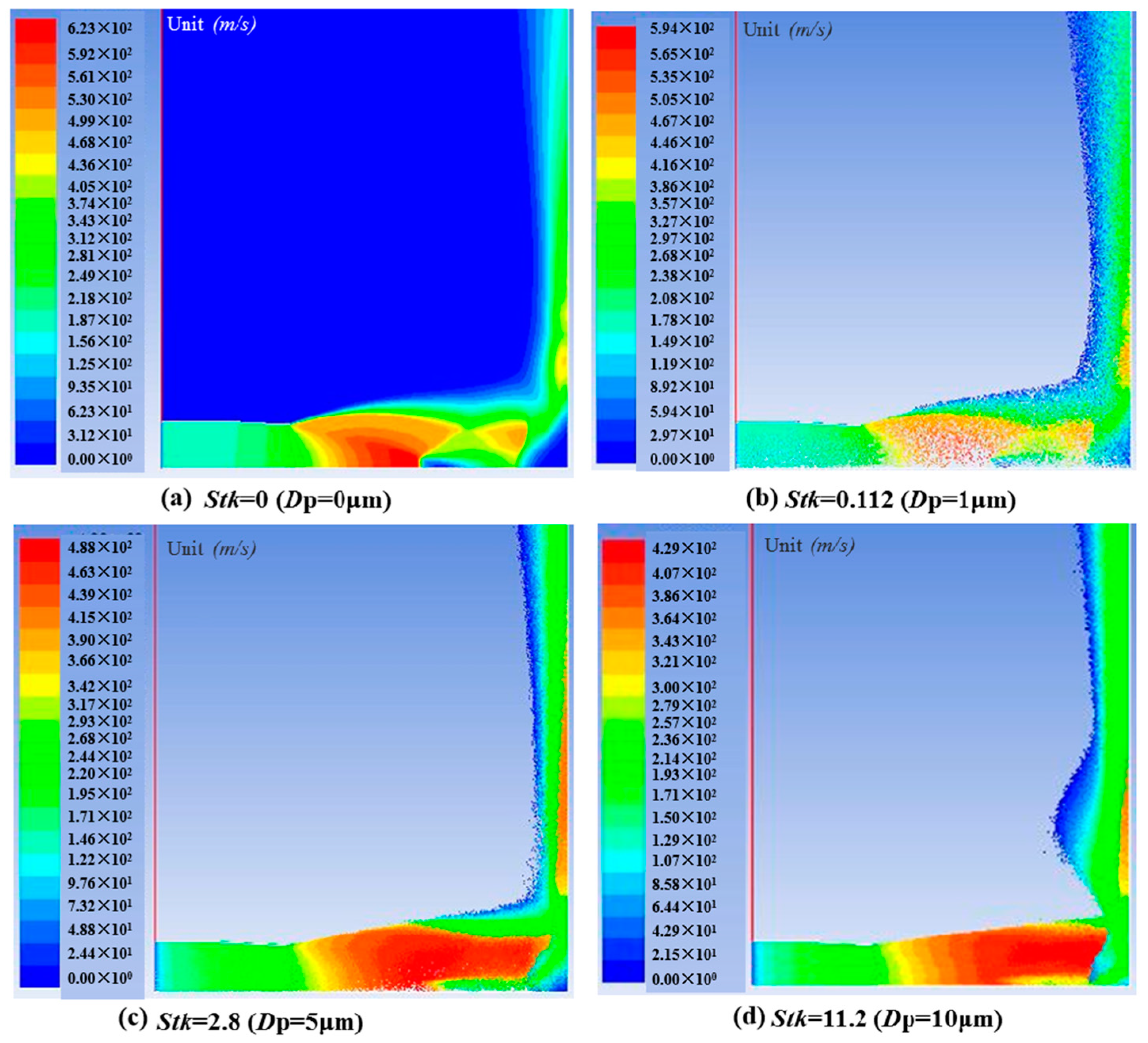
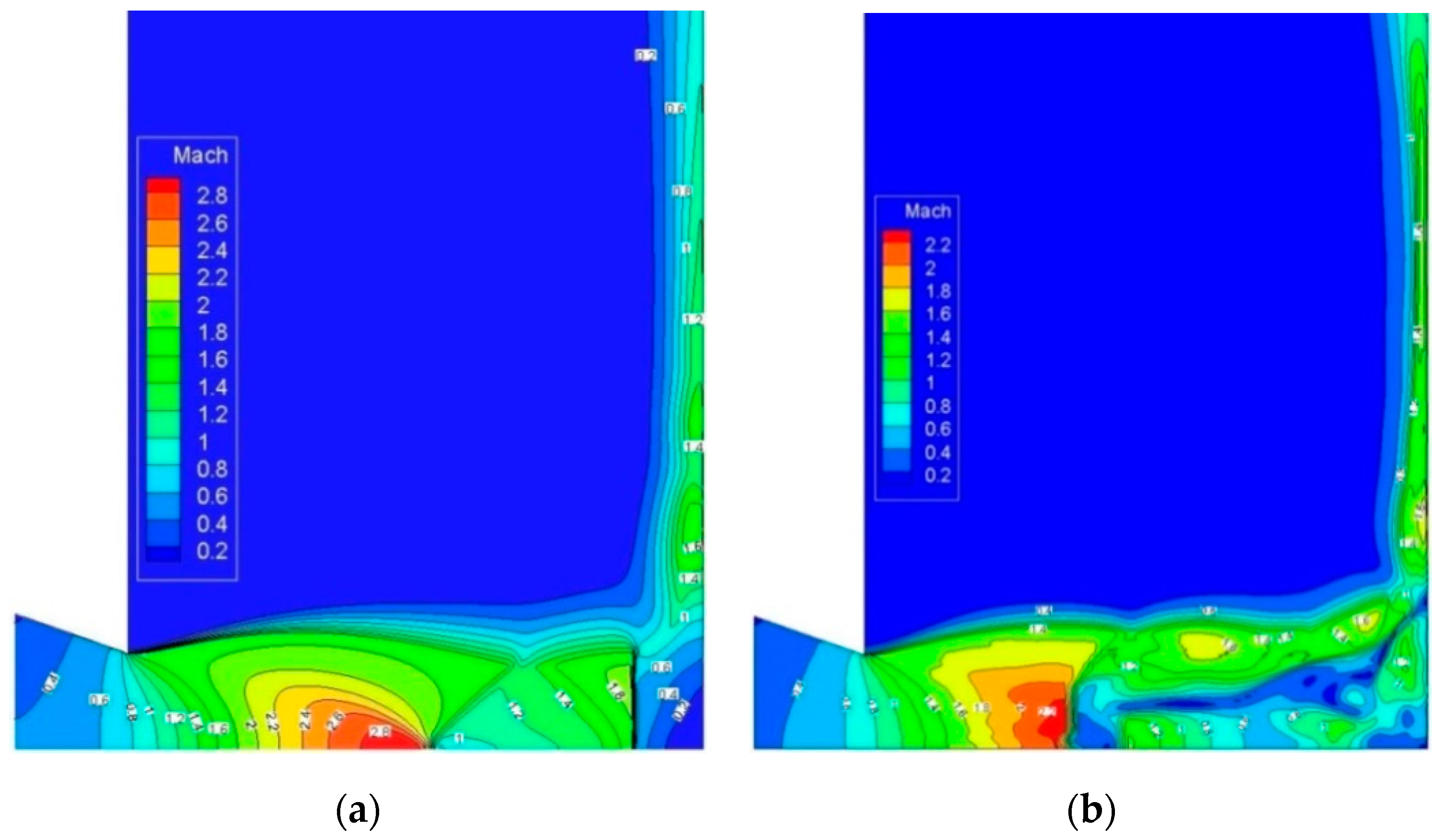

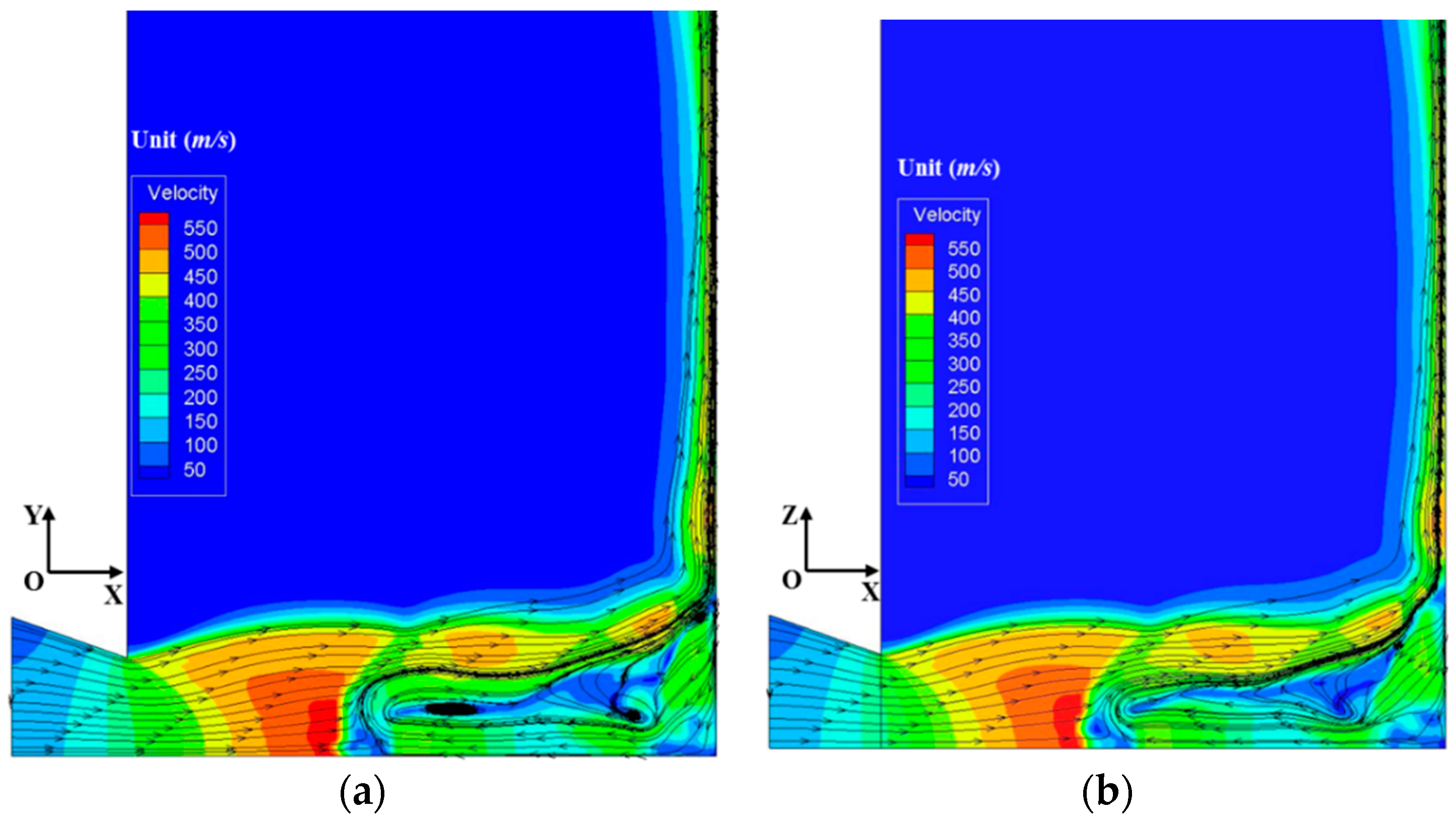
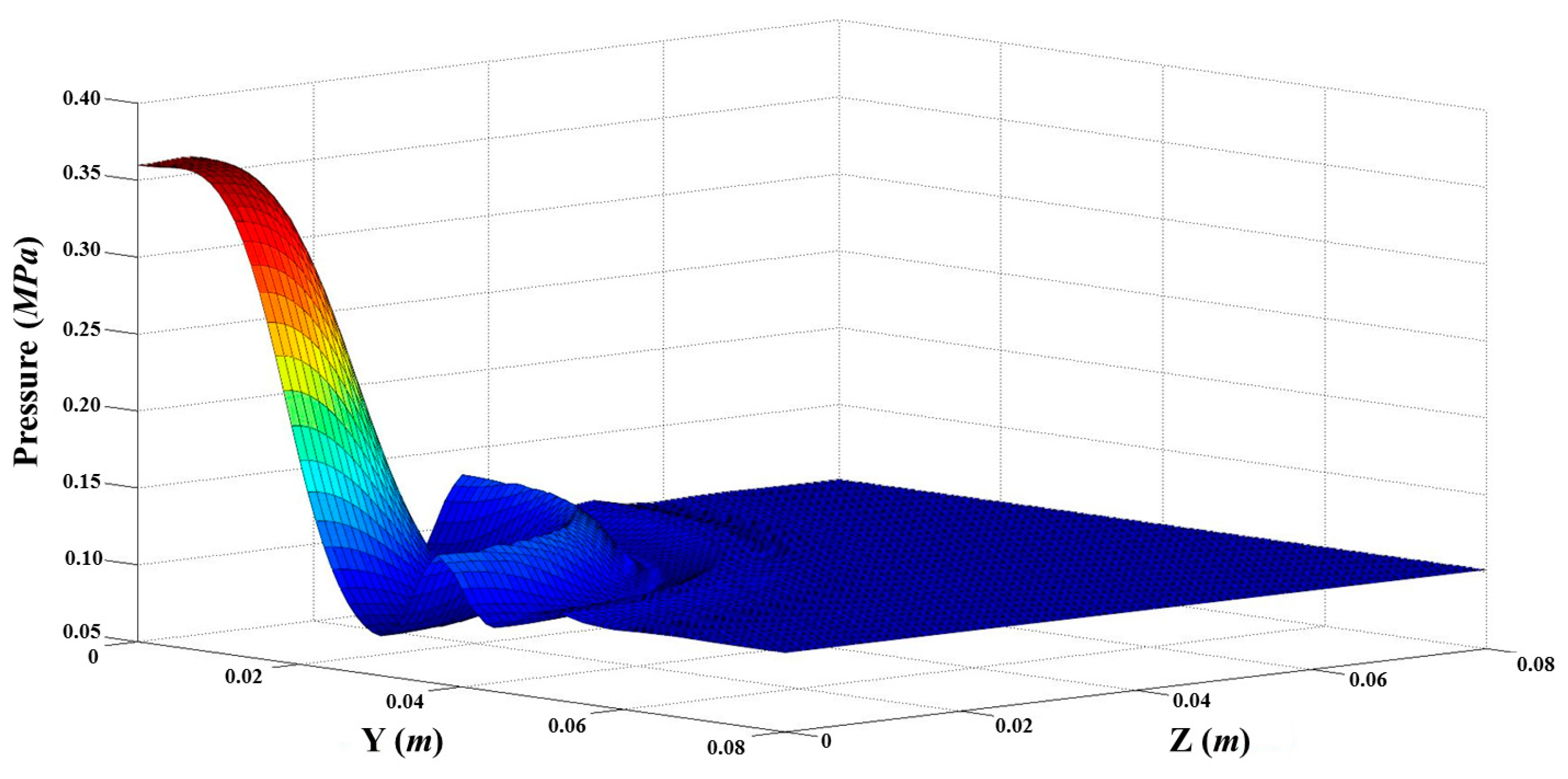
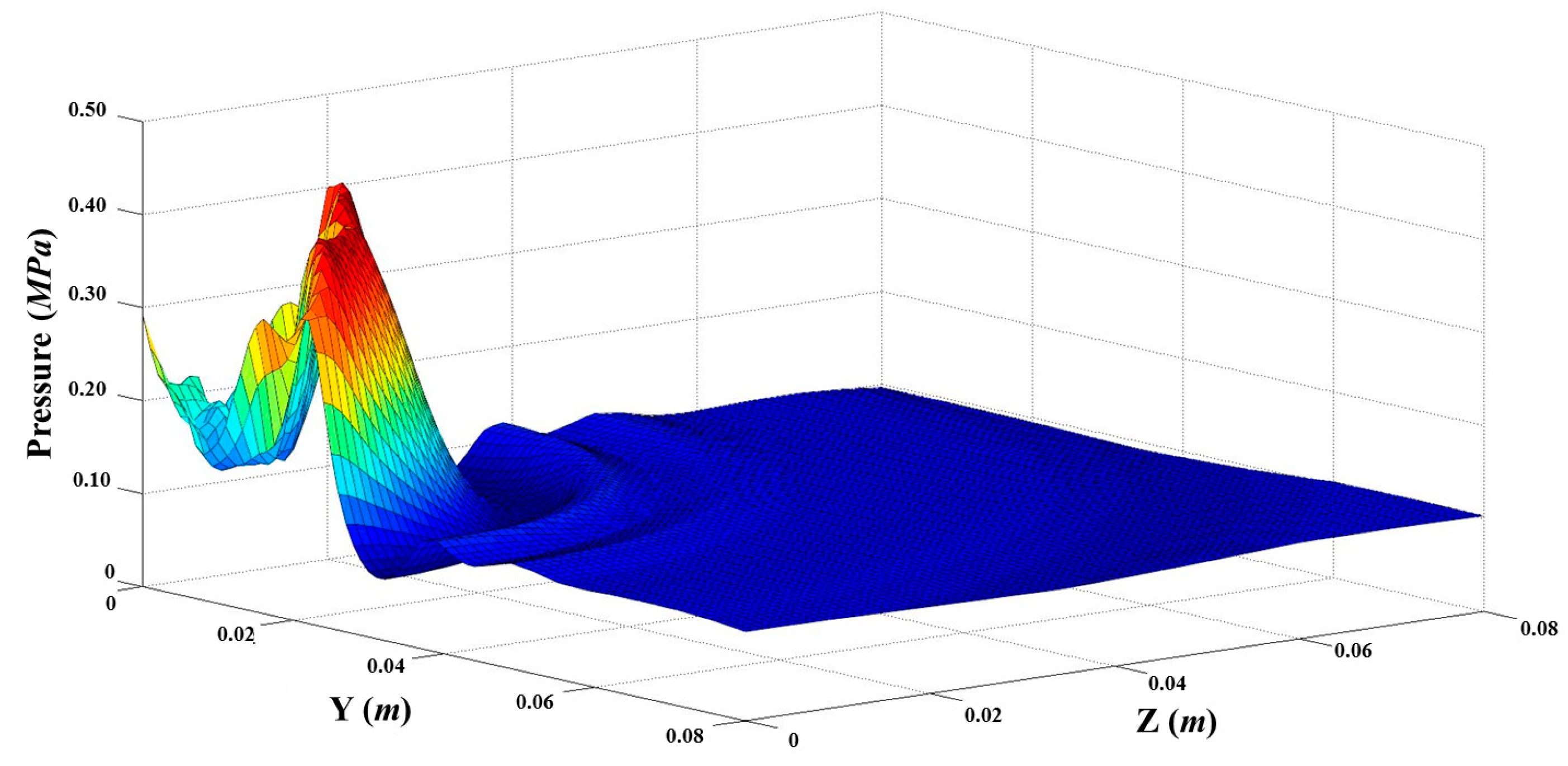

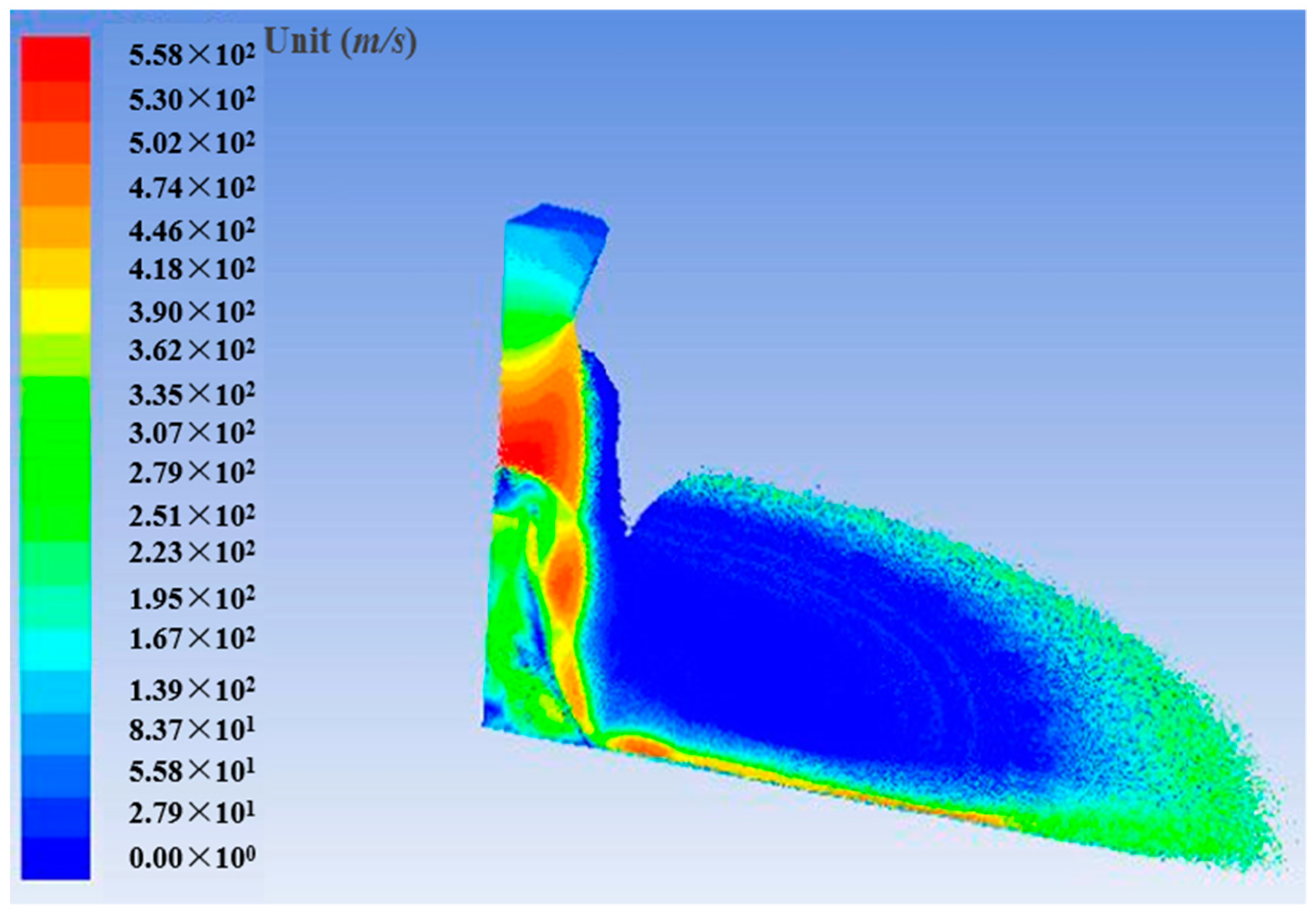
| Cases | Single Gas Flow | Particle Mass Loading of 10% | Particle Mass Loading of 20% |
|---|---|---|---|
| FI (N) | 109.42 | 192.14 | 223.67 |
| Non-dimensional FI | 1 | 1.756 | 2.044 |
© 2020 by the authors. Licensee MDPI, Basel, Switzerland. This article is an open access article distributed under the terms and conditions of the Creative Commons Attribution (CC BY) license (http://creativecommons.org/licenses/by/4.0/).
Share and Cite
Zhang, G.; Ma, G.F.; Kim, H.D.; Lin, Z. Numerical Analysis of Supersonic Impinging Jet Flows of Particle-Gas Two Phases. Processes 2020, 8, 191. https://doi.org/10.3390/pr8020191
Zhang G, Ma GF, Kim HD, Lin Z. Numerical Analysis of Supersonic Impinging Jet Flows of Particle-Gas Two Phases. Processes. 2020; 8(2):191. https://doi.org/10.3390/pr8020191
Chicago/Turabian StyleZhang, Guang, Guang Fei Ma, Heuy Dong Kim, and Zhe Lin. 2020. "Numerical Analysis of Supersonic Impinging Jet Flows of Particle-Gas Two Phases" Processes 8, no. 2: 191. https://doi.org/10.3390/pr8020191



